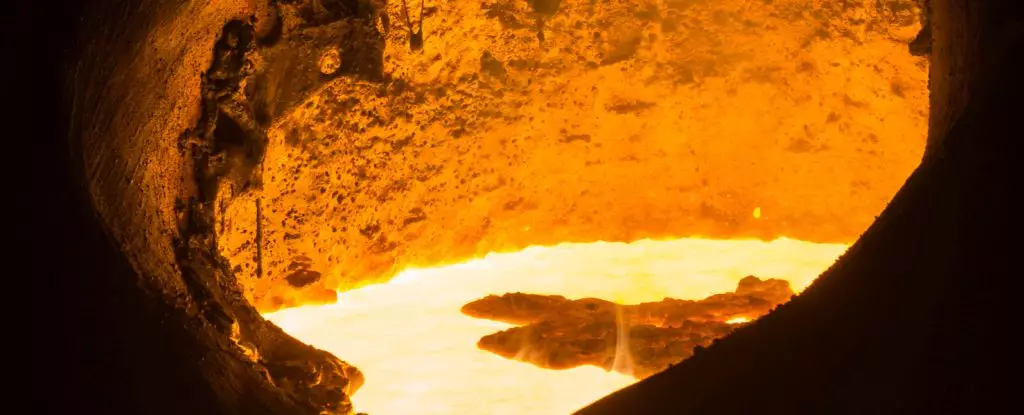Recent scientific advancements have unveiled a jaw-dropping secret about our planet’s core—a treasure trove of gold lies beneath our feet, seeping slowly into the Earth’s crust. It’s a revelation that inspires awe and provokes deeper questions about our understanding of geological processes. For years, the gold that has tantalized our dreams and filled our pockets seemed like an elusive prize; hidden away in veins unreached by our efforts. Yet new research suggests that this precious metal is not only confined to inaccessible mines but is actually leaking from the Earth’s core, offering tantalizing evidence that our planet still carries priceless elements left from its tumultuous infancy.
Gold: From Core to Crust
The ambitious study led by geochemists from Göttingen University in Germany is nothing short of revolutionary. Through meticulous analysis of isotopes in volcanic rocks, researchers discovered that gold, together with other precious heavy metals like palladium and platinum, has origins in the Earth’s metallic core. They cleverly used variations of ruthenium isotopes—an innovative method pushing the boundaries of geological science—to unlock information previously hidden from view. This discovery isn’t just about the mere presence of gold; it challenges the long-standing perception that Earth’s core is a sealed environment disconnected from the external world. Instead, it opens a portal to a past when massive elements settled deep within the Earth’s layers, leading to a scenario where our essential metals are still finding their way to the surface.
A Gold Rush of a Different Kind
While the notion of abundant gold trickling into our crust might sound seductive, it is essential to temper our enthusiasm with pragmatism. The rate at which these metals emerge is far from lucrative—geologically speaking, we are not striking gold in the ways the mythical prospectors hoped for. Yet the implications of this slow leak are far-reaching and complex. Firstly, it raises the prospect of other rocky planets harboring similarly generous deposits, a tantalizing thought for astronomers and astrobiologists alike. Perhaps we’re not alone in our quest for understanding—or, more intriguingly, perhaps other worlds have their own hidden fortunes waiting for discovery.
The Iron Catastrophe and Its Aftermath
The synthesis of heavy elements during the Earth’s formation—known as the iron catastrophe—was crucial in determining the geochemical landscape of our planet. As heavier metals sank into the core, they paved the way for a differentiated Earth, leading to the crust we stand upon today. Yet, this discovery forces us to confront the sheer scale of what lies beneath our feet. Research estimates that over 99% of the Earth’s gold remains stashed away within its innermost layers, the stuff of both legend and industry. In a sense, Earth resembles a mythical dragon hoarding vast wealth, inciting both greed and curiosity.
Scientific Progress and Its Ripple Effects
The innovation demonstrated by Messling’s team in identifying the unique signature of ruthenium isotopes signifies more than just a groundbreaking scientific achievement; it heralds a new approach to studying planetary evolution. By developing techniques that focus on minute differences in isotopes, we can understand not only our own planet but also the geological histories of others in our solar system. Each astonishing finding further confirms that Earth is a dynamic, interconnected system rather than an isolated entity.
Rethinking Earth’s Treasures
In a world grappling with its environmental crises and resource scarcity, the idea of gold leaking from the core invites us to reconsider our relationship with resources. Are we to simply chase after what’s already accessible, or can we embrace this knowledge as a catalyst for broader conversations about sustainability, exploitation, and technology? This discovery conveys a dual narrative that encompasses the stretch of human aspiration mingled with the humble reality of our natural limitations.
While the discovery of leaking gold from the core may not ignite a gold rush in the traditional sense, it undoubtedly symbolizes the continuous journey of human inquiry. Amidst the shadows of scarce resources and environmental threats, we are reminded that our planet is still capable of revealing secrets that inspire wonder and awe, urging a reevaluation of our priorities in a world where exploration and conservation must walk hand in hand.



Leave a Reply